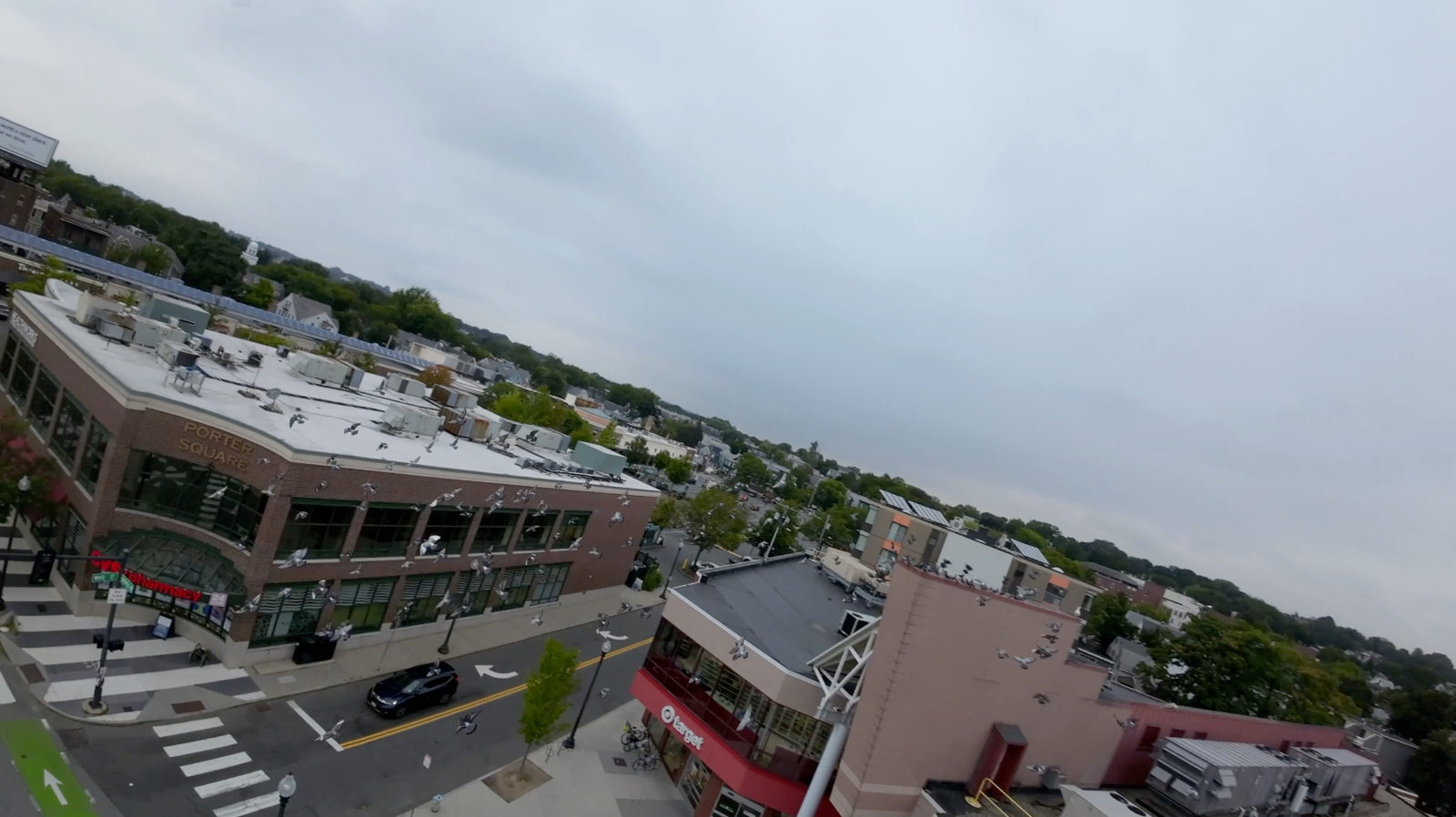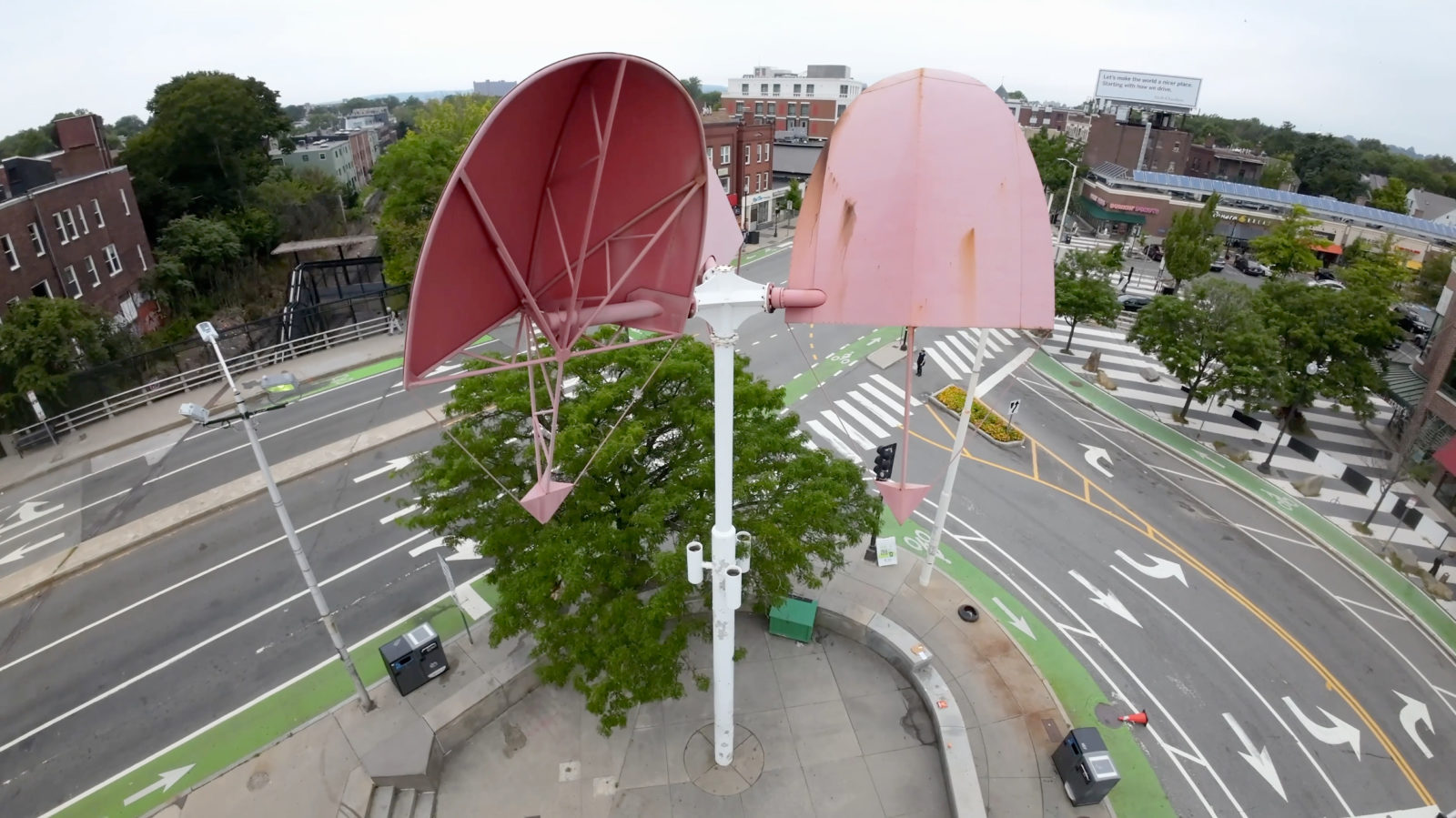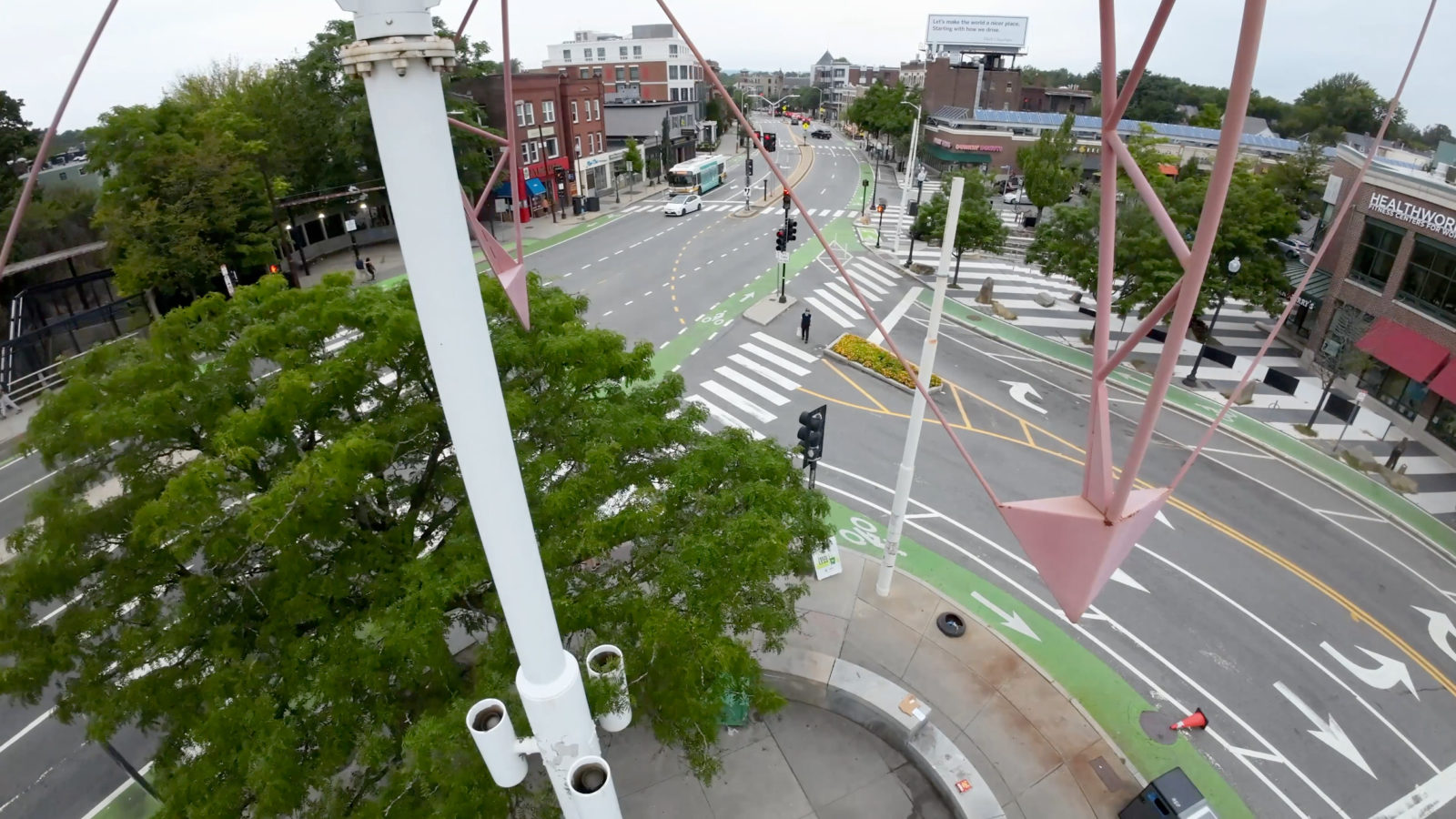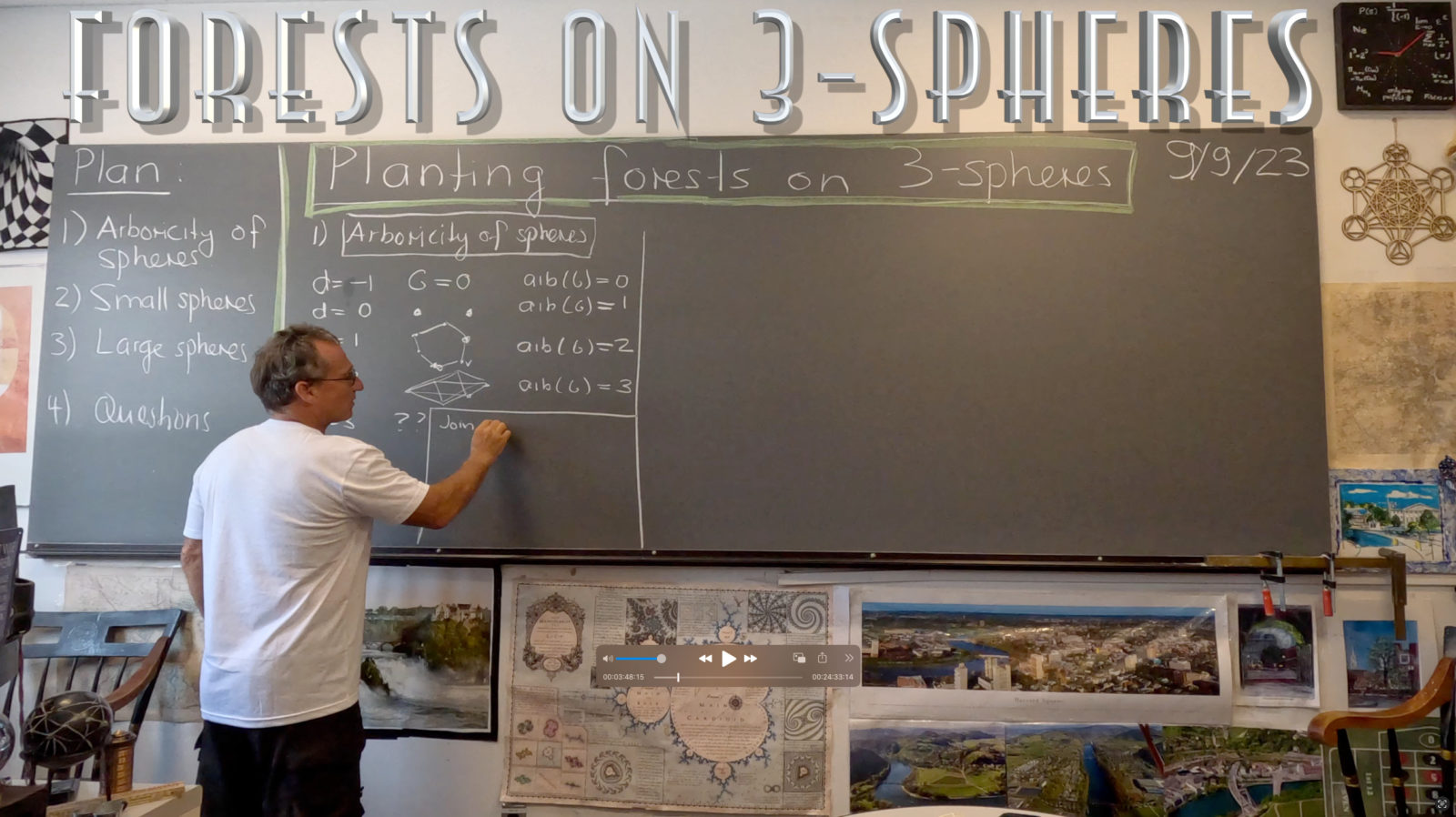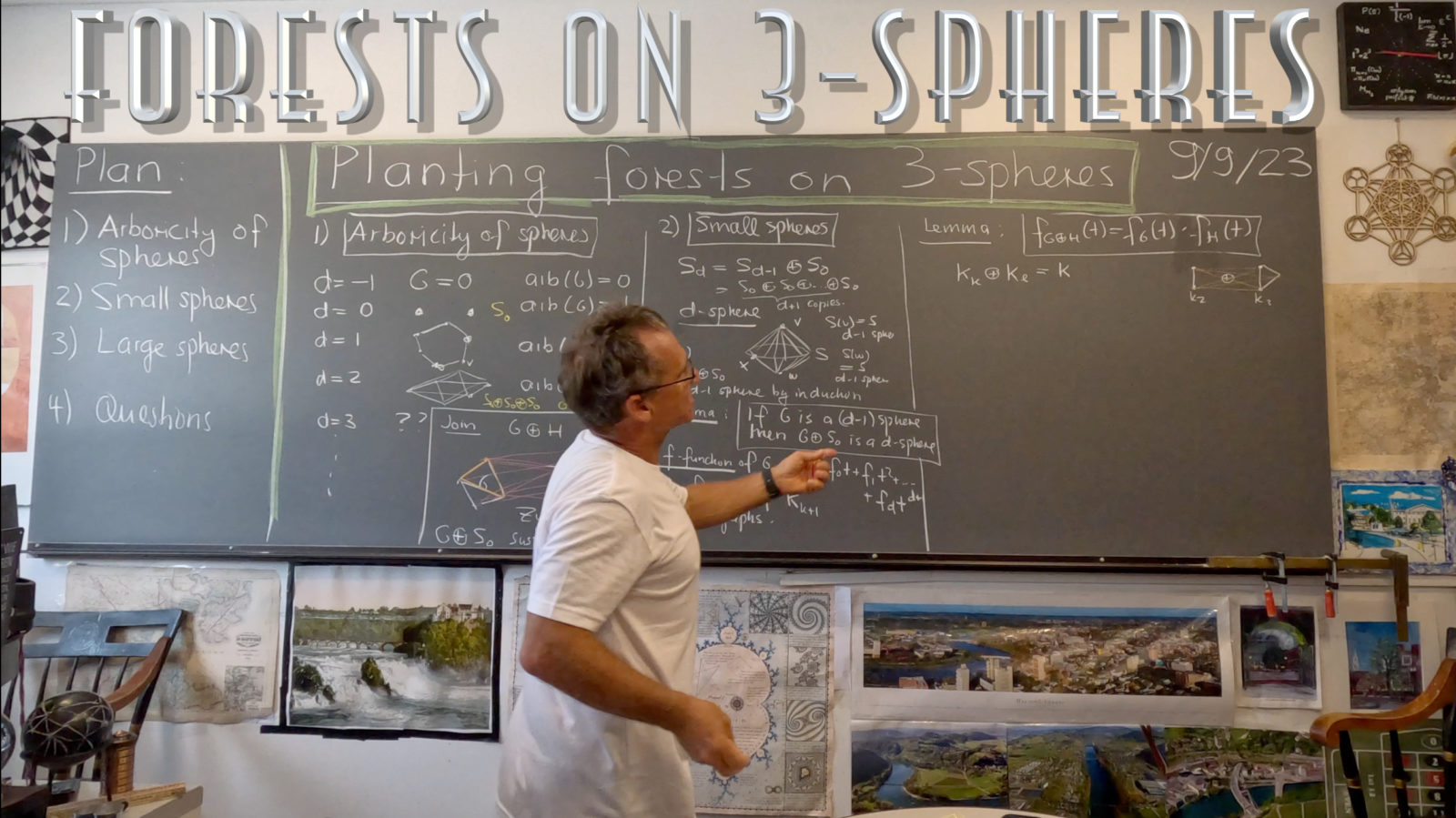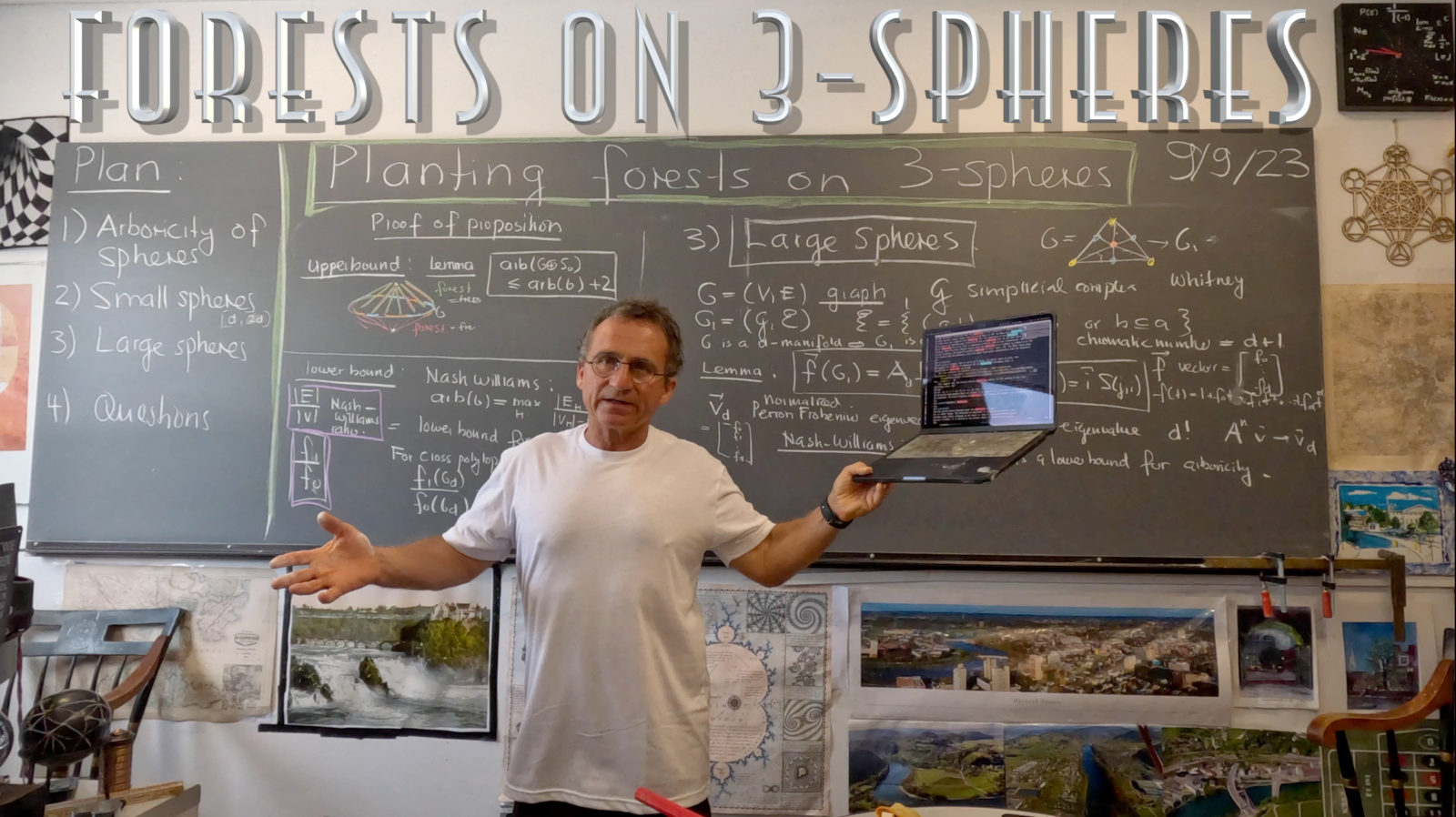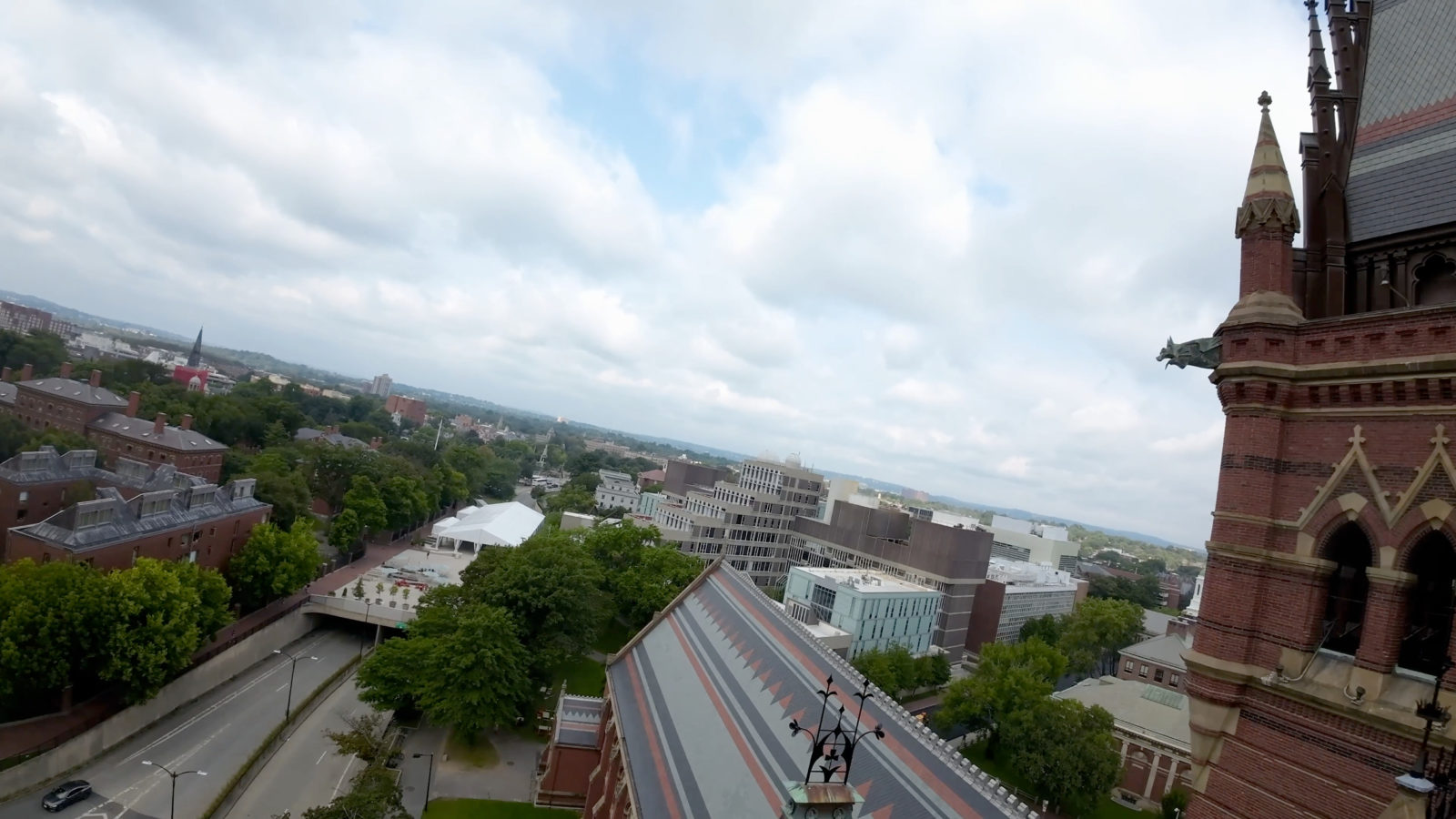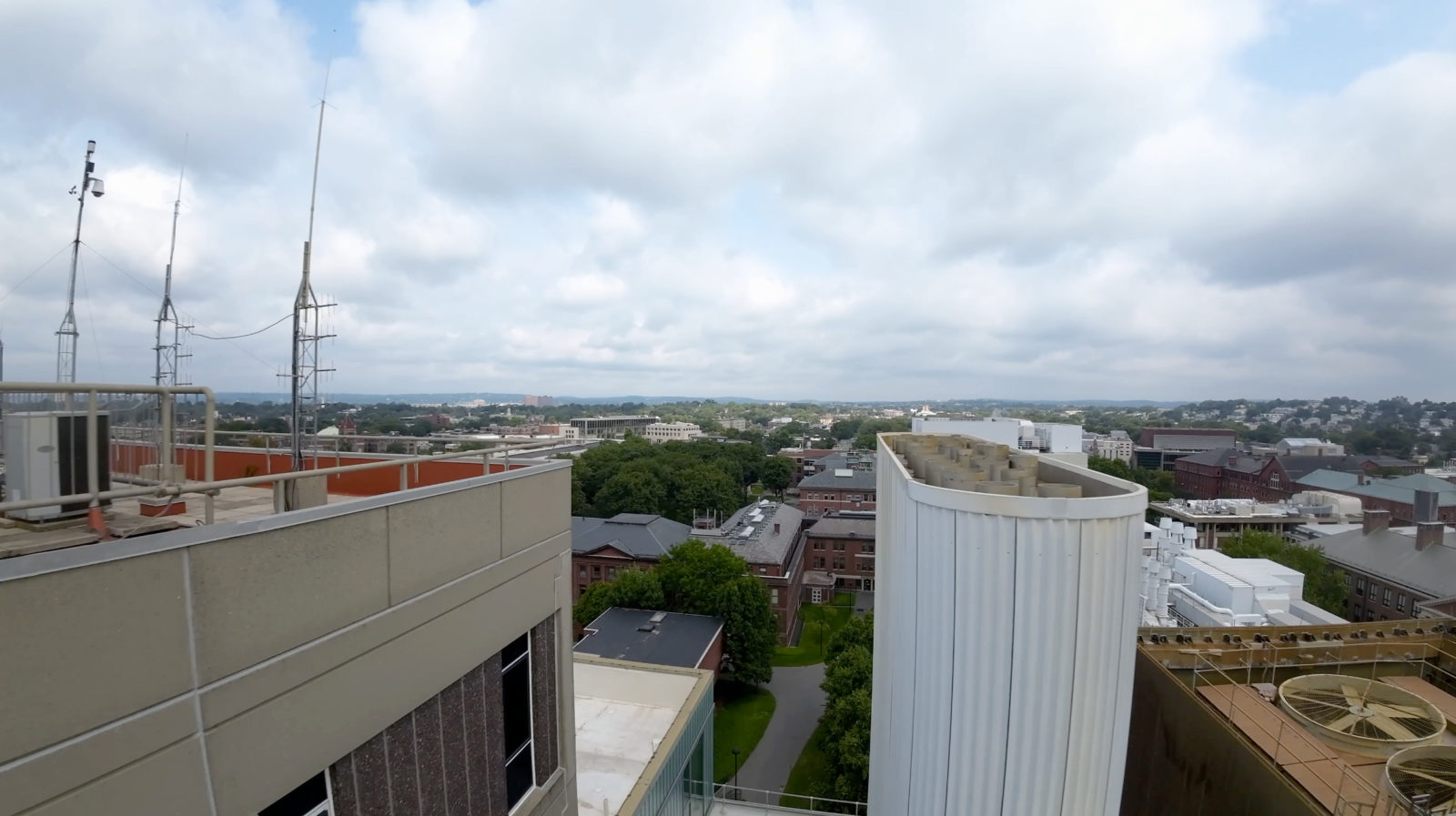One of the upshots of the video is that the arboricity of 3-spheres can be 4,5,6,7. I tried to prove (but had to retract during the talk) that the arboricity of the d-cross polytop, the smallest d-sphere is d+1. Nash-Williams shows that it can not be lower and for an upper bound, we just need to construct d+1 forests by induction. I by purpose did not cut out that part of the movie because it is for me also interesting to see how I do mathematics. The meta study on how one does new mathematics is even more interesting than mathematics itself. How does one get started with a new question? How does one proceed if one is stuck? What is the best strategy for success? At which moment for example is it smart to look at the literature? At the moment, I believe the question about functionals on discrete d-manifolds is quite fresh and unexplored. But it is an interesting and fruitful area. And not too technical. This is important for example in busy times like the beginning of the semester, where a lot of things pile up. I usually work on research while running (which gives time to reflect on a topic without distraction or then at night (last night for example I worked from 1AM to 4 AM at night because I could not sleep.
Last night I went a bit beyond what I talk about in the video. I think to know now that the arboricity of a 3-sphere is less or equal than 8. The argument is similar than the argument I used for showing that “three trees suffice” for 2-spheres. I proved once that the chromatic number of a d-manifold is smaller or equal than 2d+2. In the three dimensional case, this means that the chromatic number is less or equal than 8 (I don’t have examples for 7 or 8 even) but examples of chromatic number 6, which is larger than what I had expected it to be 10 years ago, when I thought a d-sphere has chromatic number should be smaller or equal than d+2 (motivated by the 4-color theorem in the case d=2).
So, if we have colored a 3-sphere with 8 colors, there are 4*7=28 different pairs of colors and so 28 different type of Kempe chains. In the 2 dimensional case, we had 6 different type of Kempe chains which we lumped together into pairs. In the 3-dimensional case, we can lump together the Kempe chains of color (12) or (34) or (56) or (78) and they are all one dimensional subgraphs. There are 28/4=7 different such sub-graphs and they cover the 3-sphere. We have covered the 3-sphere with 7 one dimensional subgraphs similarly as in the 2 dimensional case, the 3 one-dimensional syubgraphs covered the 2-sphere. In the 2-dimensional case, we showed that it is possible to recolor so that they are all forests (except if the graph is a prism). In the 3-dimensional case, we do not have such a result yet. The Poincare conjecture indicates that using heat deformation of geometry will be much, much more difficult in three dimensions and I do not try yet. But what we can do is to use an 8th forest to break any of the Kempe loops. So, the arboricity is less or equal than 8.
How do we get spheres with arboricity 7? This is not so difficult and just uses the Barycentric refinement. Barycentric refinement has a very nice explicit rule to get the cardinatlities of the subgraphs. We can get the number of edges and vertices in particular for the n-th Barycentric refinement and the ratio convertes universally for any initial graph of maximal dimension d. It does not even have to be a manifold. Now, in the limiting case, we just have to look at the Perron-Frobenius eigenvector of the Barycentric refinement. Now in the limit and in the case d=3, it is 13/2 which is 6.5. For any graph G, large enough Barycentric refinements always have arboricity at least 7. We believe however that 7 is the maximum.
So, the question is: “do 7 trees suffice”?
